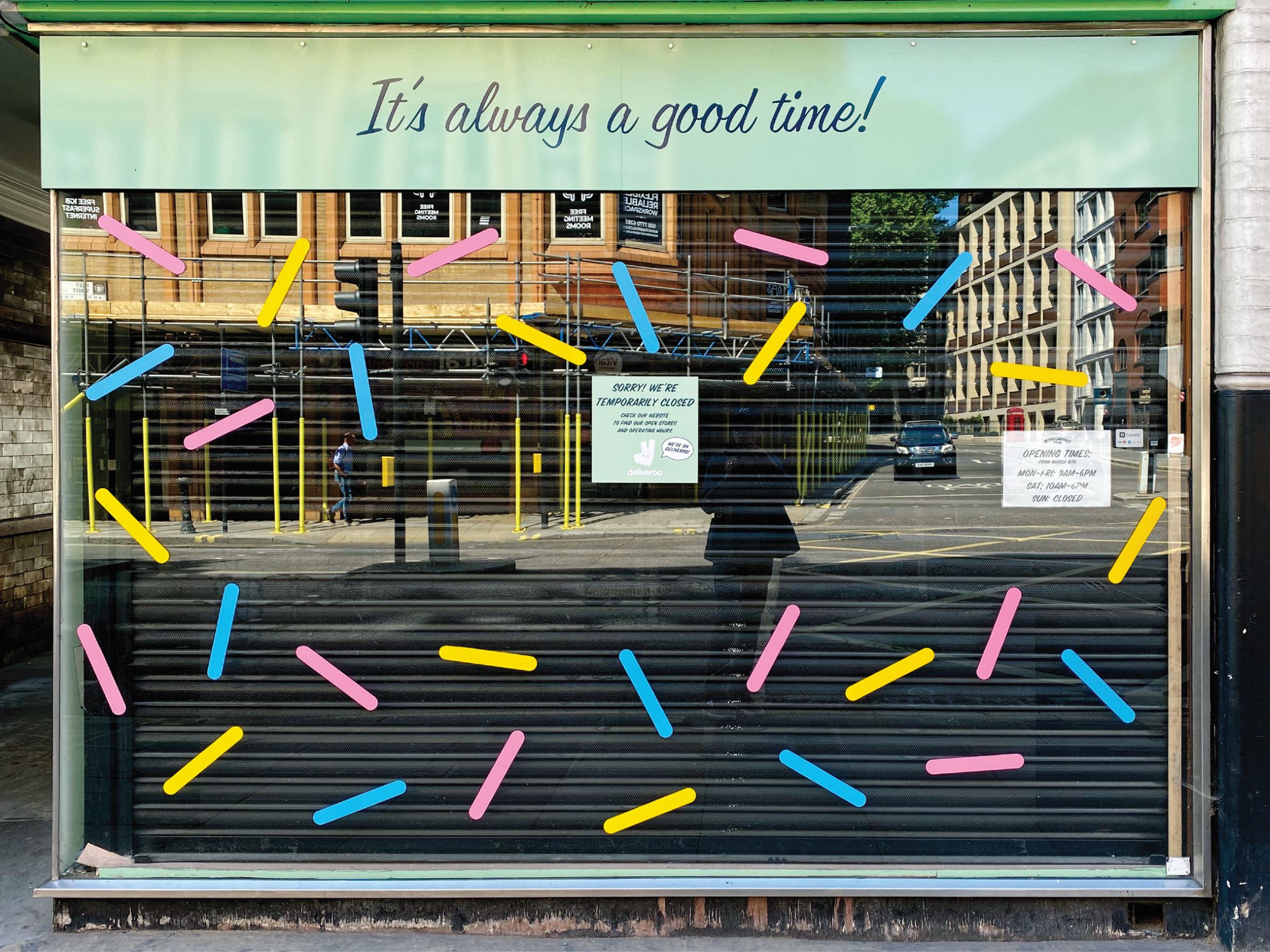
Friday, May 22, 2020
During the Covid-19 lockdowns, central London became (almost unimaginably) completely deserted. Businesses were rendered obsolete without their customers: cafes, restaurants and bars hung signs explaining that they were closed with no opening date in sight.
Artist Christian Marclay was inspired by this disruption of the city’s familiar commercial rhythms and spent much of Spring 2020 photographing London’s empty streets while adjusting to the new tempo. He began to interpret the landscape sonically, sending photos to composer Steve Beresford to imagine as piano music. Marclay’s photos together with Beresford’s handwritten notation would eventually become the photobook Call and Response.
Beresford has an eclectic background as both a composer and musician, working with Brian Eno, The Slits, Evan Parker and The Flying Lizards. With this punk approach in mind, his scores have an explorative, almost off-the-cuff feel, each written page seeming as if it could be a sketch for a more expansive project. Marclay, often described as the inventor of turntablism, is similarly prolific, working as a multidisciplinary artist across sound art, plunderphonics, and video. Seeking out patterns in his surroundings, his photographs continue a thread of interest in the relationship between visual, auditory and daily rhythms.
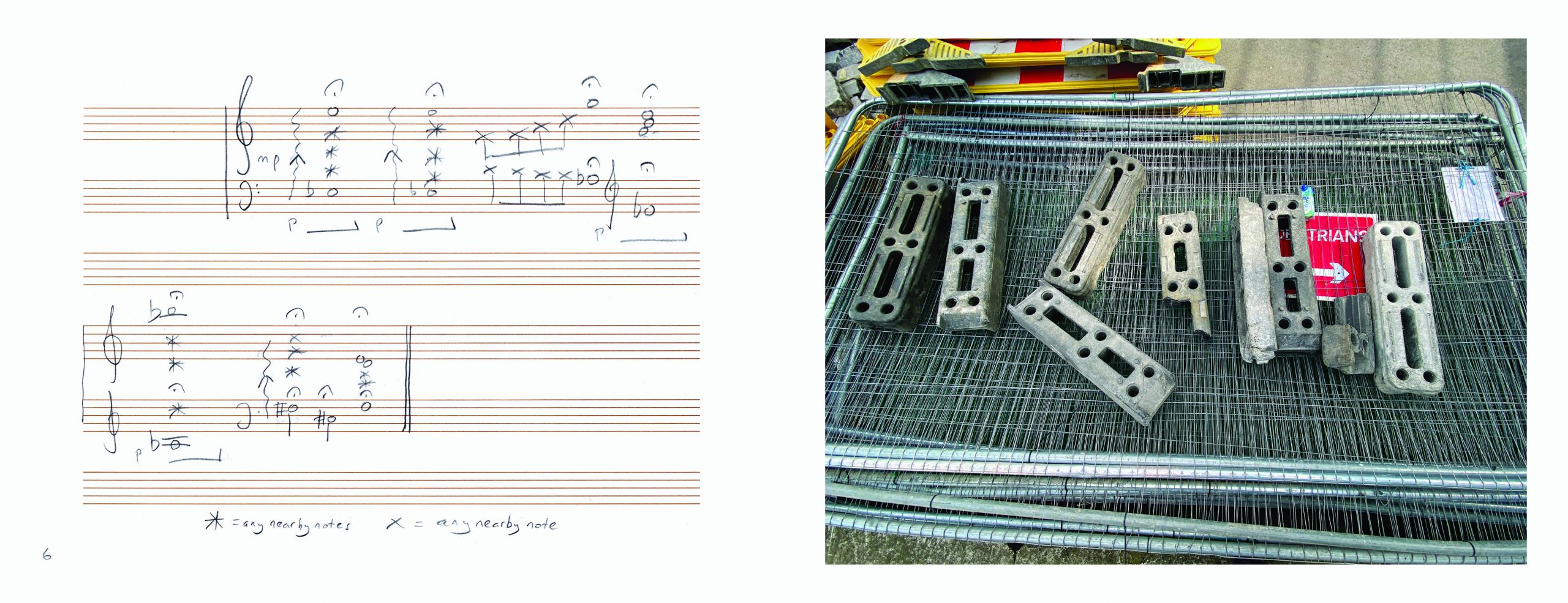
Each of Marclay’s 20 numbered photos is diary entry-like: no titles, just the dates he took them. Here you have railings, grey abstract shapes on the windows of commercial buildings, neatly stacked boxes obscured behind glass, and a row of beverages on a shopfront. But these photos are not ghostly: there is a stark, graphic boldness to many of them.
“Marclay began to interpret the landscape sonically, sending photos to composer Steve Beresford to imagine as piano music”
Readers who cannot read the musical notation that accompanies each image will likely only be able to connect the two works by their immediate visual quality. But for those who can sightread written scores, the project becomes even more textured, allowing more scope for interpretation.
When played on piano, Beresford’s responses sound slow, deliberate and sombre. Despite Call and Response’s playful origins (Marclay describes the book as “a little game,”) the tone of the music is grave. On scores like 2 and 4 there are long, deliberate gaps between each striking of the piano key. There’s an unnerving amount of space for the natural reverberation of the instrument to breathe. Waiting for the silence to be interrupted is anxiety-inducing. These tense pauses are littered throughout most of Beresford’s pieces here, regardless of pacing.
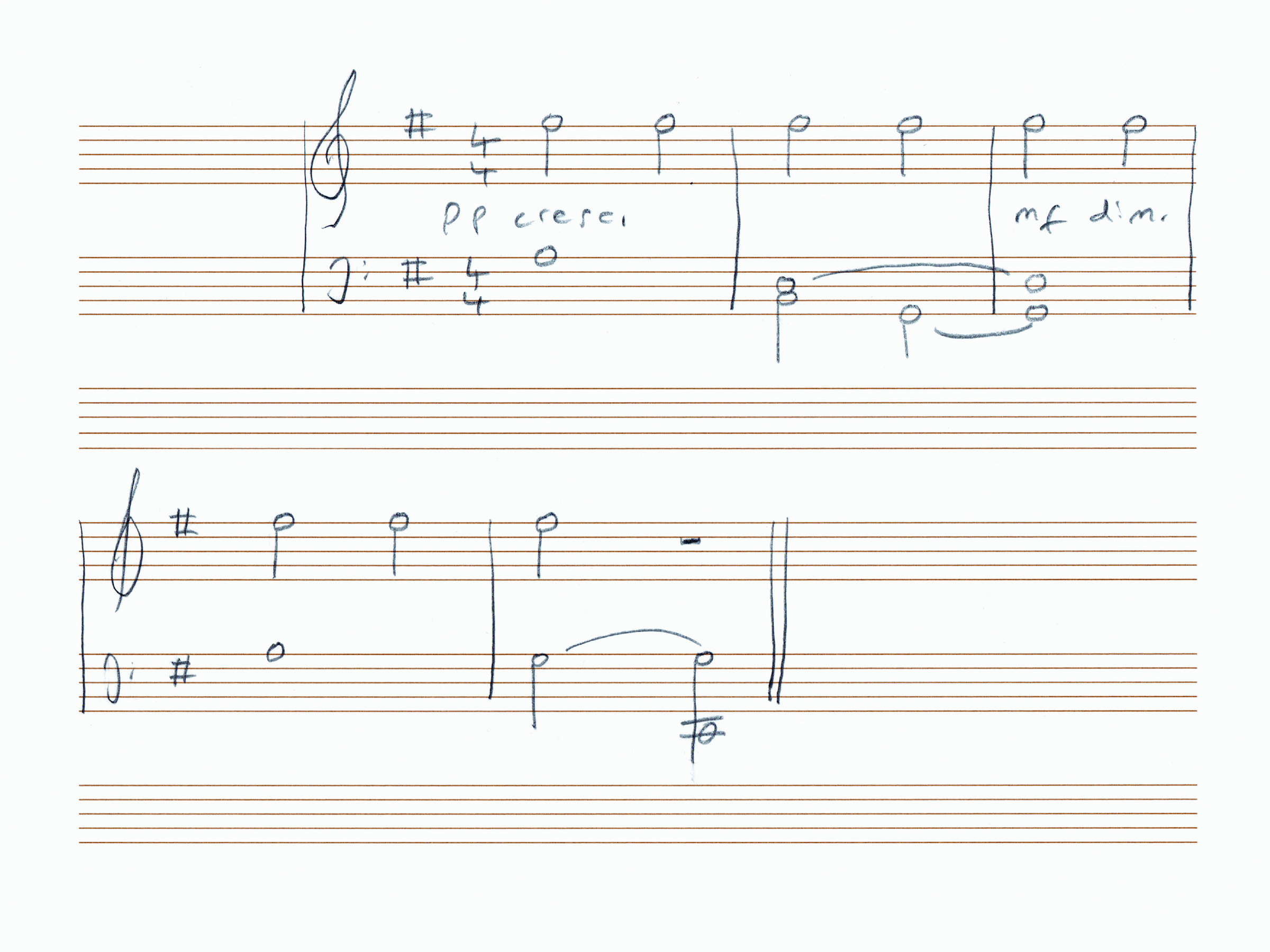
“The only human presence, the only human eye, is the photographer’s barely visible reflection in a window”
There is also curiosity, an element of surprise in some of the pauses of the phrasings. Notes linger before abruptly, decisively moving on. It’s like an eye halting intently on one scene before flitting to another.
This furtive eye lives through Marclay’s photos too. The only human presence, the only human eye, is the photographer’s barely visible reflection in a window. Contrasted with the constricted, graphic boldness of his subject matter in 11 and 14, Marclay could be the ghost of a city worker, or a glitch in a set of CAPTCHA images. In 18
, he is mysteriously absent. Marclay’s buildings come across like relics here, echoing a past London owned by city workers and tourists. As with Beresford’s solemn pauses, we are anticipating the return of the past.
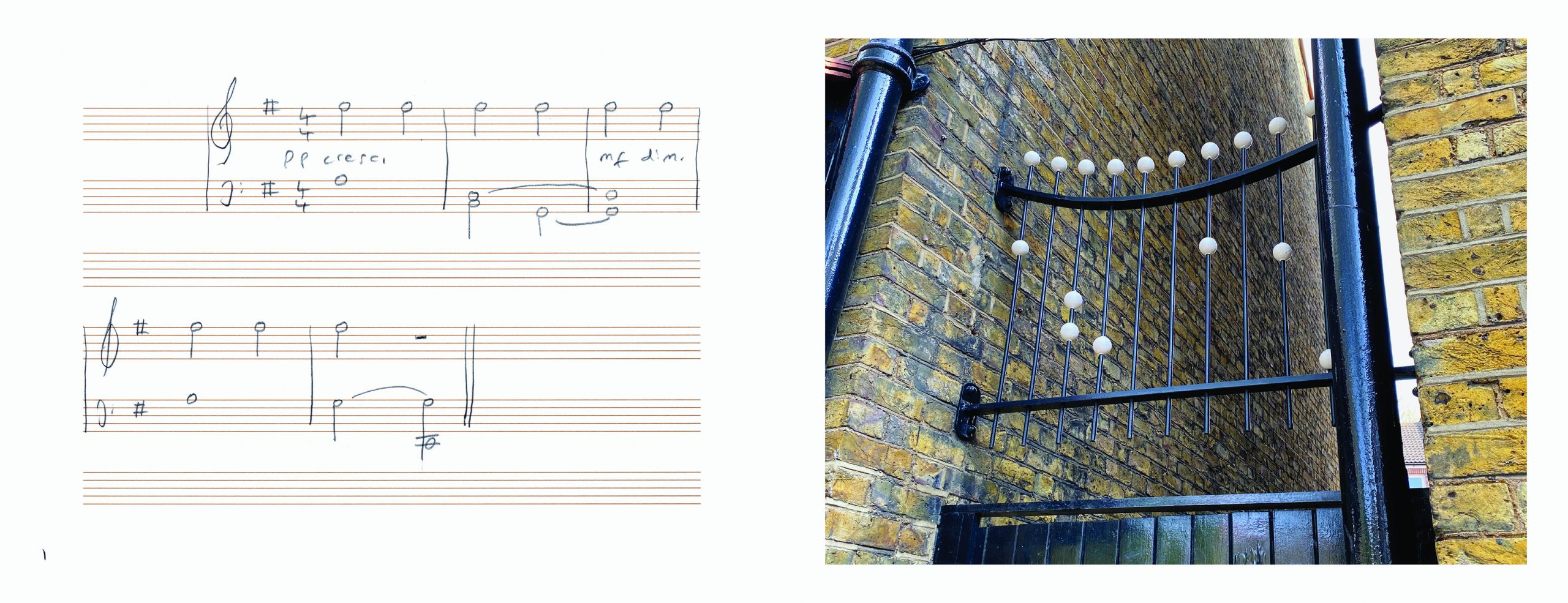
Marclay had already demonstrated his interest in the phenomenology of time in his audio-visual collage The Clock. The film, which weaves around 12,000 film clips depicting time-conscious characters into a 24-hour continuum, crystallised the artist’s explorations of hourly rhythms and time-sense. The work evokes our anxiety about time, the ennui of waiting, even the experience of boredom while watching the montage from start to finish.
Meanwhile, Beresford’s musical notation can be viewed as an artwork in itself. The idea is nothing new, with musique concrète composers in the 20th century creating graphic notations with a striking visual quality: sometimes playful, cypher-like, often asking a great deal of imagination from its transcriber.
“Notes linger before abruptly, decisively moving on. It’s like an eye halting intently on one scene before flitting to another”
Graphic notation has recently become a meme via the Twitter account Threatening Music Notation, whose popularity has highlighted how people read playfulness and liberation in notation without being able to hear the music itself. Think of John Cage’s Fontana Mix as a famous example, its score presented as a grid crossed by lines like tangled threads. The recording of the piece is a web of crackling vocal samples and twisted, pitch-bent analogue synths.
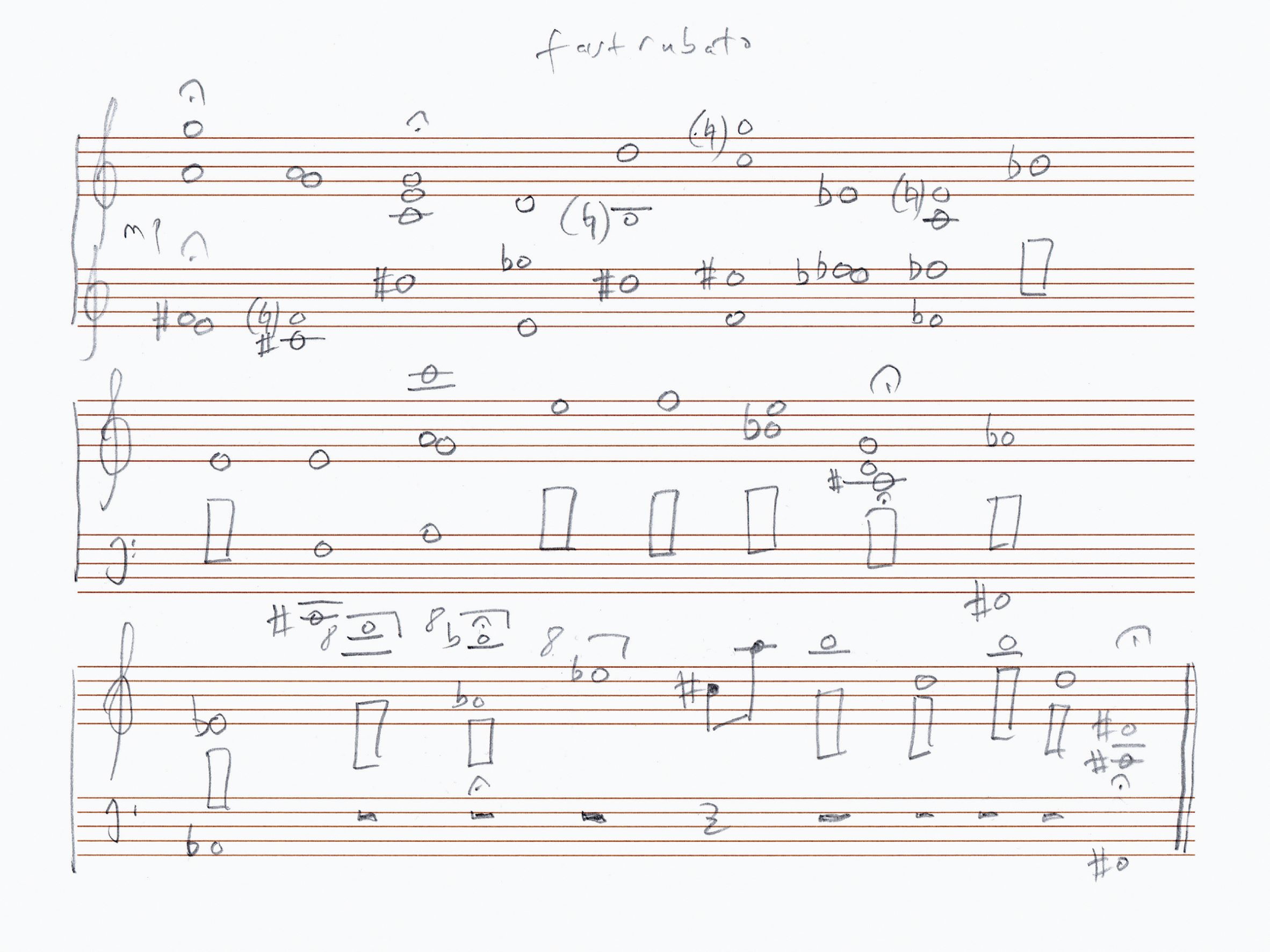
Call and Response stands apart from this form of graphic notation due to Beresford’s more conventional scores. If the two were presented separately, the chances are they would not be interpreted in the same way. Instead, the reader looks for both visual and musical rhythms. In 1, the score’s individual notes look as if they are mimicking the rows of the railing in Marclay’s photo.
Lockdown restrictions gave boredom and the act of waiting a new moral significance. Call and Response is a testament to how these measures provided artists with a new set of creative conditions. It feels here as if the two artists were searching together for orderliness (no matter how imposing) in this changed London landscape. Beresford responds to repeating patterns that Marclay has found in the architecture, their calm deliberation is occasionally peppered with discordance. But as Marclay describes in the book’s introduction, this is a constricted orderliness, boarded-up, echoing the repetition and forced routine of lockdown walks.
Lottie Brazier is a writer and musician
Call and Response by Christian Marclay and Steve Beresford is out on 7 June 2022 (Siglio Press)
Individual photographs and text © 2021, Christian Marclay
Individual scores © 2021, Steve Beresford






